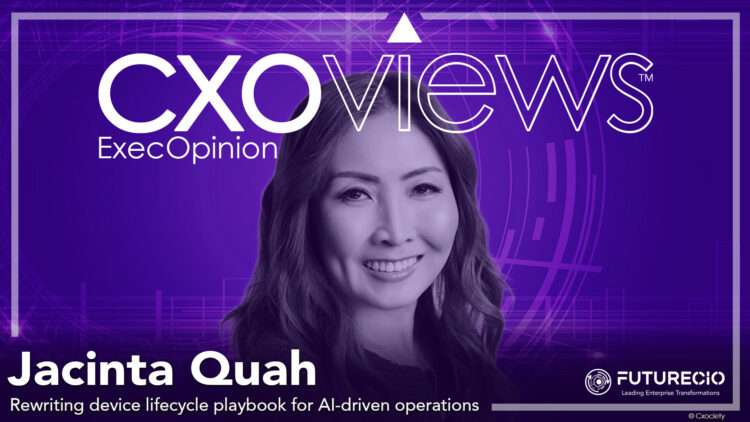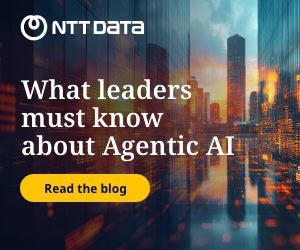For decades, the corporate laptop was a predictable workhorse—reliable, replaceable, and largely undifferentiated. But as 2025 draws to a close and organisations across Southeast Asia prepare for the next wave of digital transformation, that era is ending.
The PC is no longer just a tool for email, spreadsheets, and video calls. It has evolved into a strategic, secure edge device, capable of running generative AI workloads locally, intelligently managing its own health, and fundamentally reshaping total cost of ownership (TCO).
This transformation is being driven by a new class of hardware: the AI PC. Defined by the inclusion of a Neural Processing Unit (NPU) alongside traditional CPUs and GPUs, these devices unlock on-device AI capabilities that address three critical enterprise concerns—data privacy, cost efficiency, and energy sustainability.
As Jacinta Quah, vice president of Dell Technologies’ client solutions group, explains: “The game-changing element of the AI PC is the introduction of the NPU… designed specifically to handle AI tasks locally.”
For CIOs in Southeast Asia, where hybrid work is now the norm, data sovereignty regulations are tightening, and cloud costs are spiralling, this shift couldn’t come at a more critical time.
Why on-device AI matters more than ever
Many assume that because generative AI tools like ChatGPT run on any device, hardware doesn’t matter. But that’s only true if you’re happy to route sensitive corporate data through public cloud APIs.
As Quah points out, enterprises and governments are increasingly reluctant to do so—not just due to privacy concerns, but also because of unpredictable and escalating cloud inference costs.
AI PCs change this equation. By processing AI workloads directly on the endpoint, they keep data local, reduce latency, and cut down on energy-intensive data transfers to distant data centres.

“On-device AI is more energy efficient. You’re harnessing intelligence where the data is generated—on your PC, your phone—without needing to rely on the cloud.” Jacinta Quah
This is particularly relevant in ASEAN markets like Indonesia, Vietnam, and the Philippines, where internet connectivity can be inconsistent, and mobile or remote workforces often operate in low-bandwidth environments.
Local AI inference means employees remain productive even offline—a crucial advantage for field service teams, rural clinics, or manufacturing plants on the region’s digital periphery.
AI PCs vs. co-pilot+ PCs: What should your organisation buy?
Not all AI-ready devices are created equal. While any AI PC includes an NPU, Microsoft’s Co-pilot+ PC standard sets a higher bar: 40 trillion operations per second (TOPS) of NPU performance. This threshold ensures smooth, responsive on-device experiences for advanced AI features like real-time language translation, summarisation, and image generation.
For CIOs planning refresh cycles in Q4 2025 for 2026 deployment, the choice hinges on user personas. “It’s no longer just about swapping old hardware for new,” Quah emphasises. “You need to ask: What AI applications will different roles run over the next three to four years?”
- Knowledge workers may thrive on standard AI PCs for basic Copilot tasks.
- Developers, designers, and data analysts will benefit from Co-pilot+ or even AI workstations for local model fine-tuning and inference.
- Field operatives in logistics or healthcare may need ruggedised AI laptops that support offline diagnostic or translation AI—like the mobile clinics in rural Japan that use on-device AI to deliver care without internet access.
Getting these wrong risks costly mid-cycle refreshes. The smart move? Align hardware specs with future AI use cases, not just today’s OS compatibility.
Rethinking device lifecycle management with AI, zero trust, and sustainability
The convergence of AI, zero trust security, and intelligent telemetry is transforming how CIOs manage device lifecycles—from procurement to decommissioning. Dell, for instance, embeds AI-driven health monitoring directly into its PCs. Features like SupportAssist use machine learning to detect hardware anomalies (e.g., battery degradation) before they cause failure, while TechDirect enables remote, automated remediation—from driver updates to thermal optimisation.
This isn’t just about uptime; it’s about extending usable life. “We’re preventing accelerated wear and silent degradation,” Quah explains. “That means devices stay in spec longer, reducing emergency break/fix scenarios and freeing IT teams to focus on strategic work.”
Security is equally embedded. Zero trust principles are now baked into hardware design, ensuring that every device—whether legacy or AI-optimised—verifies identity, enforces least-privilege access, and self-heals against threats.
And for CIOs under pressure to meet ESG targets, AI PCs offer a sustainability double win:
- Energy efficiency: Local AI processing reduces reliance on power-hungry data centres.
- Longer device life: Predictive maintenance and remote manageability delay e-waste.
The new skills your IT team will need
Managing a hybrid fleet of legacy devices, AI PCs, and Co-pilot+ systems demands new competencies. As Quah observes, “The skill set that is needed… is part of what the C-suite must think about.”
Tomorrow's endpoint teams will need:
- AIOps literacy: Understanding how to interpret AI-generated telemetry.
- Remediation scripting: Automating fixes across thousands of devices.
- Toolchain fluency: Integrating device management with broader ITSM and security platforms.
Dell’s approach — “simplify, then automate, then apply intelligence” — offers a roadmap. But CIOs must also foster a mindset shift: IT isn’t just maintaining devices; it’s enabling an “agentic” future where AI assistants autonomously manage tasks across cloud and edge.
The bottom line for Southeast Asian CIOs
The message is clear: the 2026 device refresh isn’t a routine upgrade—it’s a strategic inflection point. By selecting AI-ready hardware now, CIOs can:
- Reduce TCO through lower cloud costs, extended device life, and automated management.
- Enhance security and compliance with on-device data processing and zero trust architecture.
- Enable next-gen productivity with local AI that works anywhere—even offline.
As Quah puts it: “Stop thinking about the PC as just a productivity tool. Start seeing it as a strategic, secure edge device.”
In a region racing to digitise while navigating cost, talent, and sustainability constraints, that perspective could be the difference between leading the curve—or chasing it.





